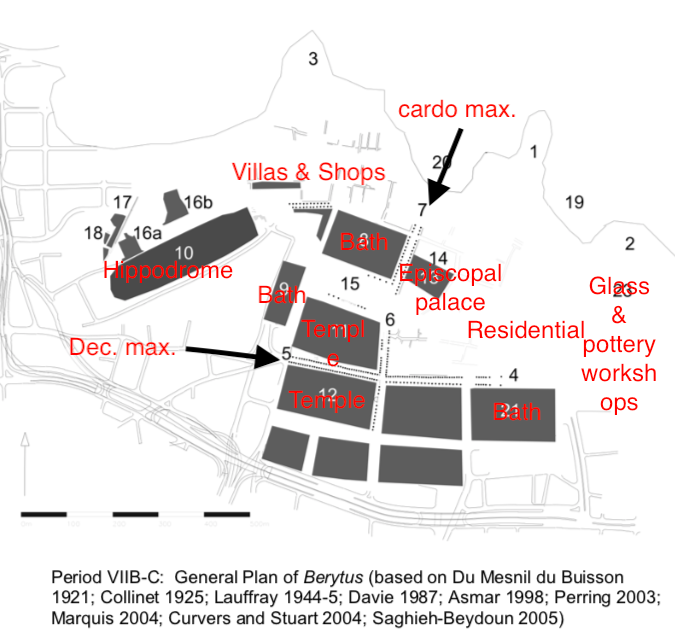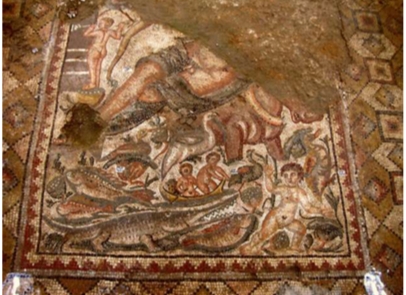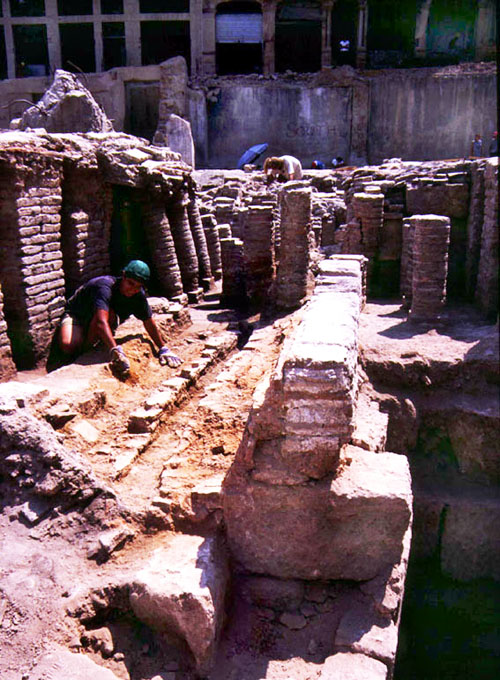1/ What does #archaeology tell us about on the eve of the Muslim #conquest. When Yazīd and Mu‘āwiya showed up, what was #Beirut like? First, what it shows us that Beirut of the 7th century was much diminished compared to the “splendid” city of the 5th-6th century- rm
2/ Beirut had lived through an earthquake in 551 CE that destroyed many of its structures, killed many, and most importantly led to the eventual loss of its #lawschool, a source of prestige and revenue- rm
3/ Example of the EQ destruction: the hippodrome to the west of town was abandoned and used as a quarry and eventually turned into a cemetery.-rm
4/ The urban villas once decorated with fancy mosaics, porticos, fountains were abandoned. Here, you see a polycandelon crushed by the rubble and left in place…the house never rebuilt. The western area of town with portico lined shops paved with numbered mosaics was abandoned-rm
5) Beirut was rebuilt, life went on, industries continued but on a reduced scale. Occupation now concentrated in the monumental core and the eastern side of the city. -rm
6) For example, the imperial bathhouse discovered across the street from the Omari mosque remained in use.-rm
7) Life also continued in the suburbs, in the estates and settlements south and East of Beirut in Khalde, Jiye, and Beit Meri.-rm
8) Beirut might have still had a wall, a community active in maritime trade, engaged in the production and distribution of wine. The Beirut signature amphorae were still produced.-rm
9) Beirut was still a walled city but it was at this point a smaller city, not a metropolis that fought and obtained imperial privileges but one that barely gets mentioned in the sources-rm

 Read on Twitter
Read on Twitter








